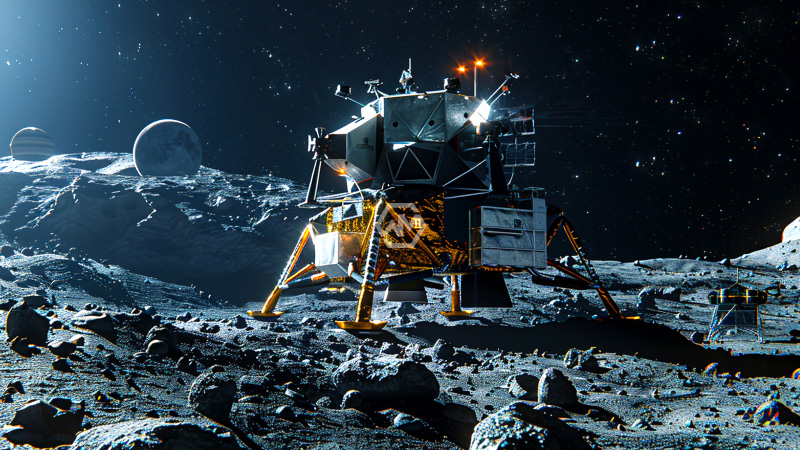- Chandrayaan-3‘s Vikram Lander recorded 250 seismic signals on the Moon, with 50 unexplained events suggesting possible moonquakes.
- Theories include micrometeorite impacts and soil expansion due to temperature fluctuations as potential causes.
- This discovery marks the first seismic data from the lunar south polar region, offering new insights into lunar geology.
India’s Chandrayaan-3 mission has uncovered a mysterious lunar phenomenon—50 unexplained seismic events recorded by the Vikram Lander’s ILSA instrument.
These seismic findings are particularly significant due to ILSA’s location in the lunar south polar region, where no previous seismic data has been collected.
Mysterious Seismic Signals Detected by Chandrayaan-3: Potential Moonquakes Raise Questions
Chandrayaan-3’s Vikram Lander has revealed surprising lunar activity, detecting 250 seismic events during its mission. While 200 of these were associated with the rover’s movements and other mission tasks, 50 signals remain unexplained. These seismic events could be moonquakes, a phenomenon that has not been extensively studied in recent lunar exploration efforts.
The Instrument for Lunar Seismic Activity (ILSA) on Vikram is the first MEMS-based instrument to record seismic data on the Moon since the Apollo missions. Positioned in the lunar south polar region, ILSA’s findings are especially intriguing as they represent the first seismic data from this part of the Moon. The varying frequencies and durations of the signals indicate the complexity of lunar geological processes.
Several hypotheses have emerged to explain these unexplained signals. One theory suggests that micrometeorite impacts on the lunar surface might have caused detectable vibrations. Another proposes that extreme temperature changes during a lunar day could lead to soil expansion and contraction, generating seismic activity.
These findings reflect the increasing sophistication of India’s space missions. Chandrayaan-3’s discoveries not only elevate ISRO’s global standing but also provide a wealth of new data for lunar scientists. The mission’s success is opening new doors to better understand the Moon’s internal structure and seismic behavior.
Chandrayaan-3’s seismic discoveries could transform our understanding of the Moon’s geological processes. As scientists delve deeper into the unexplained signals, the mission stands as a milestone in advancing lunar exploration.
“The Moon is not a dead world but a dynamic one, still capable of shaking and quaking.” – Bill Anders, Apollo 8 astronaut.



